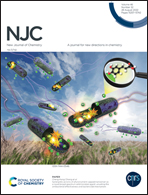Tuning the spin caloritronic transport properties of InSe monolayers via transition metal doping
Abstract
Two-dimensional InSe monolayers have been proven to be a promising candidate in optoelectronics, field-effect transistors, and solar energy conversion due to their unique electronic properties, environmental stability, and high carrier mobility. However, studies exploring the potential application of InSe monolayers in spin caloritronics are rare so far. Here, based on first-principles calculations combined with the nonequilibrium Green's function technique, we examine the thermal-driven spin transport properties of a transition metal-doped InSe monolayer. A spin-dependent Seebeck effect, nearly perfect thermal spin filtration, and obvious negative differential thermal resistance (NDTR) coexist in the device based on a Ni-doped InSe monolayer along the zigzag and armchair directions. The thermal-driven current through the device is dominated by the spin-down electrons within a wide temperature range. The predicted NDTR originates from the temperature-dependent difference in the Fermi–Dirac distribution between two electrodes and the spin-resolved transmission spectra. Moreover, we find that the spin caloritronic transport properties through the InSe monolayer can be effectively tuned by doping different transition metals, i.e. Mn atoms. Our findings provide theoretical insight into the design of spin caloritronic devices based on transition metal-doped InSe monolayers.



 Please wait while we load your content...
Please wait while we load your content...